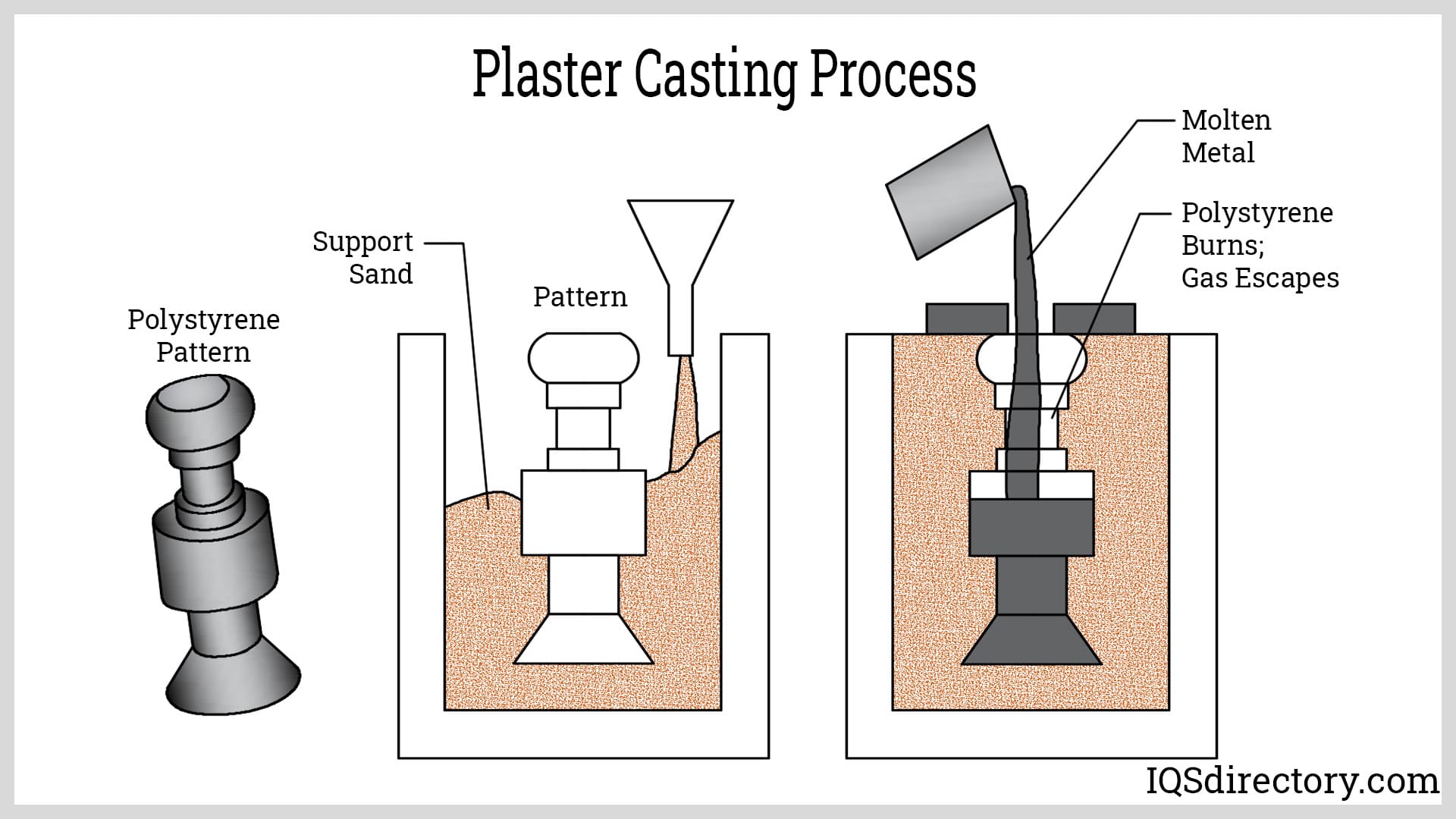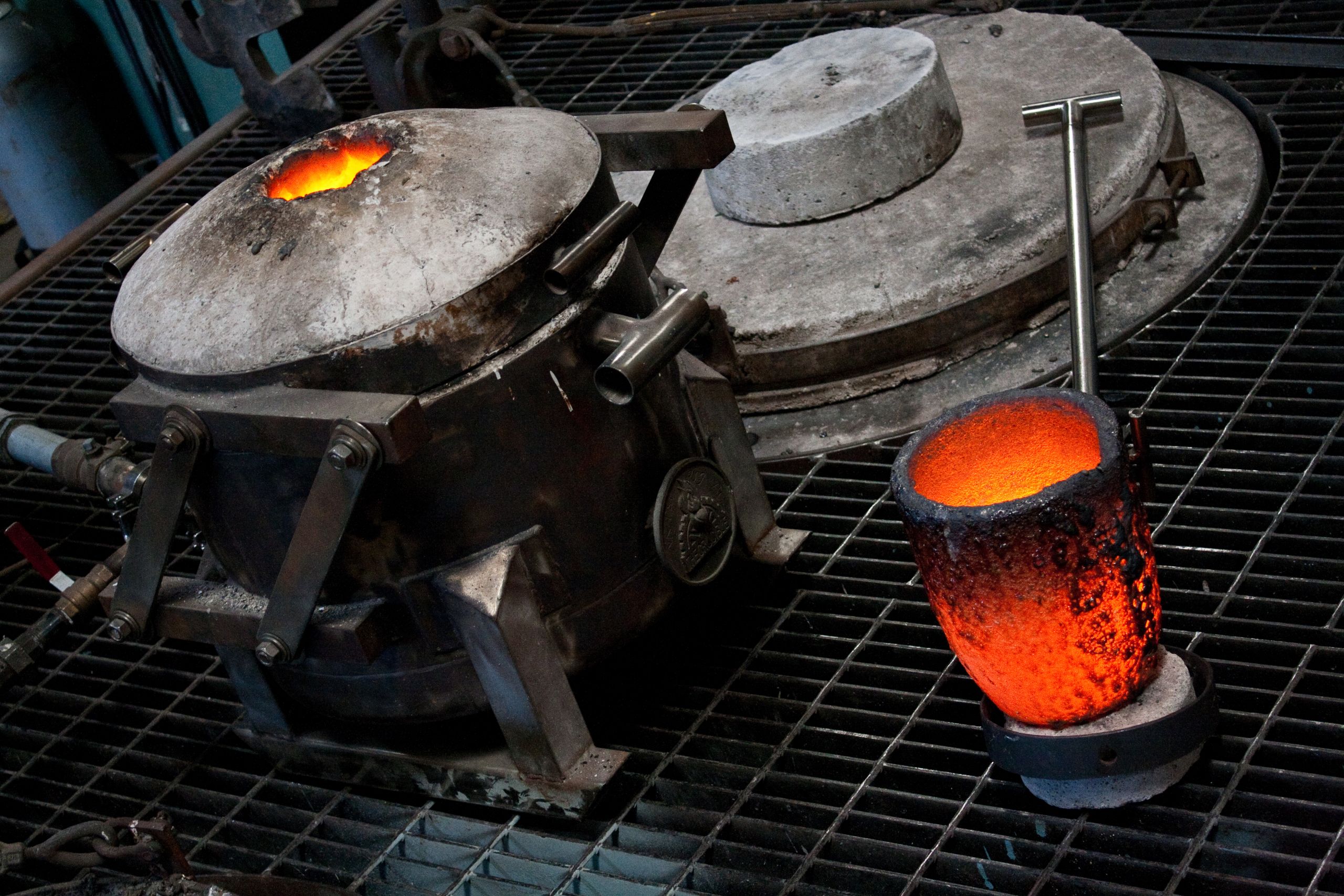How Aluminum Castings achieve strength through refined techniques
Wiki Article
Comprehending the Steel Castings Refine: A Comprehensive Overview for Beginners
The Metal Casting procedure is a basic method in manufacturing that transforms molten steel into solid kinds. Novices should comprehend the different approaches entailed, such as sand spreading and pass away spreading. Understanding the materials, style concepts, and safety and security measures is just as crucial. Each aspect plays an essential role in attaining successful results. As one navigates these ins and outs, the concern of how to maximize each action for improved outcomes becomes increasingly pertinent.The Basics of Steel Casting
Although Metal Casting has advanced over centuries, its fundamental concepts remain constant and important to the production procedure. At its core, Metal Casting involves the change of liquified steel right into strong items through various techniques. The procedure begins with the development of a mold and mildew, which defines the form of the end product. When the mold and mildew is prepared, metal is heated up to its melting factor and put right into the cavity. After cooling down, the metal strengthens, taking the form of the mold and mildew.There are several casting methods, including sand spreading, financial investment casting, and pass away spreading, each with special advantages and applications. The choice of method depends on elements such as manufacturing quantity, material type, and wanted accuracy. As soon as cast, the end product might go through extra procedures like machining or surface therapy to attain the required finish and specifications. Comprehending these basics is crucial for any individual curious about the area of Metal Casting.

Recognizing Materials Used in Metal Casting
Materials play an important role in the Metal Casting process, influencing the last item's residential or commercial properties and efficiency. Different metals are made use of, consisting of aluminum, iron, steel, and bronze, each offering distinctive characteristics matched for specific applications. Aluminum is light-weight and corrosion-resistant, making it perfect for automobile components. Iron, especially cast iron, is favored for its exceptional wear resistance and durability. Steel supplies high strength and convenience, commonly utilized in heavy machinery elements. Bronze, understood for its corrosion resistance and machinability, is commonly used in marine applications.Along with the steels, numerous casting products, such as sand, plaster, and ceramic, are utilized to create molds. Sand casting, one of the most prevalent method, makes use of silica sand because of its thermal stability and capability to create detailed forms. Plaster and ceramic mold and mildews supply finer information but might need even more complex processes. The choice of products directly affects the performance, price, and quality of the spreading operation.
The Style Refine: From Concept to Blueprint
The design procedure in Metal Casting begins with the first concept advancement, where concepts are produced and evaluated. This is adhered to by the application of CAD modeling techniques, enabling precise visualizations of the design. The plan completion actions assure that all specifications are properly recorded for manufacturing.First Principle Advancement
Preliminary principle growth notes an essential phase in the Metal Casting procedure, where concepts transform right into substantial styles. Throughout this phase, designers collaborate with stakeholders and engineers to brainstorm and fine-tune preliminary ideas. They think about elements such as functionality, aesthetic appeals, and manufacturability, making certain that the design fulfills the needed specs and performance criteria. Illustrations and outlines are created to envision the ideas, permitting preliminary assessments of expediency and cost-effectiveness. This stage likewise includes determining materials and potential casting methods that align with the design objectives. Ultimately, initial idea advancement lays the foundation for a thorough blueprint, guiding the succeeding stages of the casting procedure and guaranteeing a successful shift from principle to fact.CAD Modeling Techniques
Transforming principles into exact designs, CAD modeling techniques play a crucial role in the Metal Casting process. These strategies make use of advanced software program to produce detailed three-dimensional designs that precisely show the desired product. By using tools such as parametric modeling, solid modeling, and surface modeling, designers can control dimensions and forms easily. CAD systems also help with simulation and analysis, enabling the identification of possible flaws prior to production begins. This proactive approach lowers product waste and optimizes the layout for manufacturability. Furthermore, CAD versions can be quickly changed, enabling quick iterations based upon comments. Basically, CAD modeling offers as the backbone of the style procedure, connecting the void between initial concepts and the ultimate production-ready styles.Blueprint Completion Steps
Following the development of in-depth CAD versions, the following stage entails plan finalization, which is vital in translating digital styles right into actionable strategies for manufacturing. This procedure begins with reviewing the CAD models for accuracy and conformity with specifications. As soon as confirmed, the measurements, resistances, and material specifications are thoroughly described to assure quality. Incorporating notes and notes aids interact important details relating to casting procedures, surface area coatings, and assembly requirements. The completed plan goes through a rigorous authorization process, typically involving cooperation with engineers and manufacturing teams to resolve any possible issues. Nevertheless revisions are click this made and authorizations obtained, the plan is formally launched, acting as the fundamental document for the subsequent stages of Metal Casting, consisting of pattern making and mold and mildew layout.The Steel Casting Strategies Explained

Metal Casting strategies include a variety of methods utilized to form liquified steel into wanted types. These strategies vary according to the sort of product, complexity of the design, and manufacturing quantity. Sand casting is one of the most typical methods, including the development of a mold from sand to hold the molten steel. Investment spreading, or lost-wax casting, permits for elaborate layouts by using a wax pattern that is dissolved. Die casting utilizes high-pressure injection of liquified metal right into a mold and mildew, suitable for mass production. Other techniques consist of irreversible mold and mildew spreading, which utilizes recyclable mold and mildews, and centrifugal casting, where rotational forces assist in filling up the mold and mildew. Each method has its benefits and applications, making it vital for producers to choose the proper technique based upon their details requirements and needs. Recognizing these methods is essential for any person associated with the Metal Casting process.
Ending Up Procedures: Enhancing Your Casted Product

Completing processes play a necessary role in improving the high quality and appearance of casted products. Different surface area treatment techniques, such as sprucing up and coating, are employed to improve sturdiness and looks. Furthermore, high quality examination approaches assure that the end product satisfies specified criteria and performance demands.
Surface Therapy Methods
A selection of surface area treatment strategies play a crucial role in enhancing the quality and longevity of casted items. These techniques include approaches such as shot blasting, polishing, and covering. Shot blasting efficiently removes surface blemishes, enhancing the practical and visual attributes of the spreading. Polishing provides a smooth finish, which is especially important for ornamental applications and components requiring minimal friction. Layer strategies, such as electroplating or powder finishing, offer additional defense against rust and wear, making sure durability. Surface area treatments can improve bond for succeeding procedures, such as painting or bonding. By using these methods, producers can accomplish exceptional surface quality, which is essential for the performance and life expectancy of Metal Casting in various applications.Top Quality Examination Approaches
Efficient top quality examination methods are necessary for guaranteeing the honesty and performance of casted products after the ending up processes. Numerous methods are utilized to analyze the top quality of Metal Casting, including visual examination, dimensional checks, and non-destructive testing (NDT) Visual assessment allows for the identification of helpful site surface problems, while dimensional checks ensure that items meet defined tolerances. NDT approaches, such as ultrasonic screening and radiographic inspection, supply much deeper understandings into internal integrity without damaging the spreadings. Additionally, mechanical testing, such as tensile and solidity tests, assesses material buildings - Aluminum Foundry. By using a combination of these methods, producers can enhance product quality and reliability, inevitably bring about higher customer complete satisfaction and decreased manufacturing expensesSecurity Considerations in Metal Casting
While the Metal Casting procedure supplies various advantages, it likewise presents a variety of safety and security dangers that need to be thoroughly taken care of. Employees in casting facilities are revealed to heats, liquified steels, and harmful products, which can result in extreme injuries if correct preventative measures are not taken. Personal protective devices (PPE) such as heat-resistant handwear covers, face guards, and protective apparel is crucial to decrease threats.Furthermore, the existence of fumes and dirt necessitates proper ventilation systems to ensure air quality - Wisconsin Aluminum Foundry. Normal training on security methods is important for all staff members to identify prospective dangers and respond efficiently. Emergency treatments need to be established, including fire precaution and emergency treatment availability. Upkeep of devices and correct handling of products even more add to a more secure working environment. By prioritizing these safety considerations, Metal Casting operations can protect their workforce and maintain effective manufacturing processes
Regularly Asked Inquiries
What Are the Ecological Effects of Metal Casting?
Metal Casting can bring about environmental impacts such as air and water contamination, source depletion, and energy usage. In addition, improper waste management and discharges from shops add to ecological disruptions and health and wellness threats for nearby neighborhoods.How Do I Select the Right Steel for Casting?
To choose the appropriate metal for casting, one need to consider factors such as mechanical buildings, deterioration resistance, thermal conductivity, and price. Reviewing the designated application and ecological conditions is crucial for excellent choice.What Are the Usual Issues in Metal Casting?
Common issues in Metal Casting consist of porosity, shrinkage, sand inclusion, and misruns. These concerns typically emerge from improper product option, inadequate layout, or imperfections in the casting procedure, influencing the end product's quality and efficiency.
Just How Can I Improve My Metal Casting Abilities?
To boost Metal Casting skills, one must practice constantly, research spreading methods, assess previous projects for defects, look for feedback from knowledgeable casters, and continually explore different materials and methods to boost effectiveness and understanding.What Is the Cost of Starting a Steel Spreading Company?
Starting a metal casting organization usually calls for a preliminary investment of $5,000 to $50,000, depending on tools, materials, and facility prices. Aspects like directory area and range can greatly affect total startup costs.The Metal Casting process is a basic method in producing that transforms molten steel into strong forms. Beginners should realize the numerous methods entailed, such as sand casting and die casting. There are a number of casting techniques, consisting of sand spreading, financial investment spreading, and pass away spreading, each with unique benefits and applications. Investment spreading, or lost-wax casting, permits for detailed designs by utilizing a wax pattern that is thawed away. Other approaches consist of long-term mold and mildew casting, which makes use of recyclable mold and mildews, and centrifugal casting, where rotational pressures help in filling up the mold.
Report this wiki page